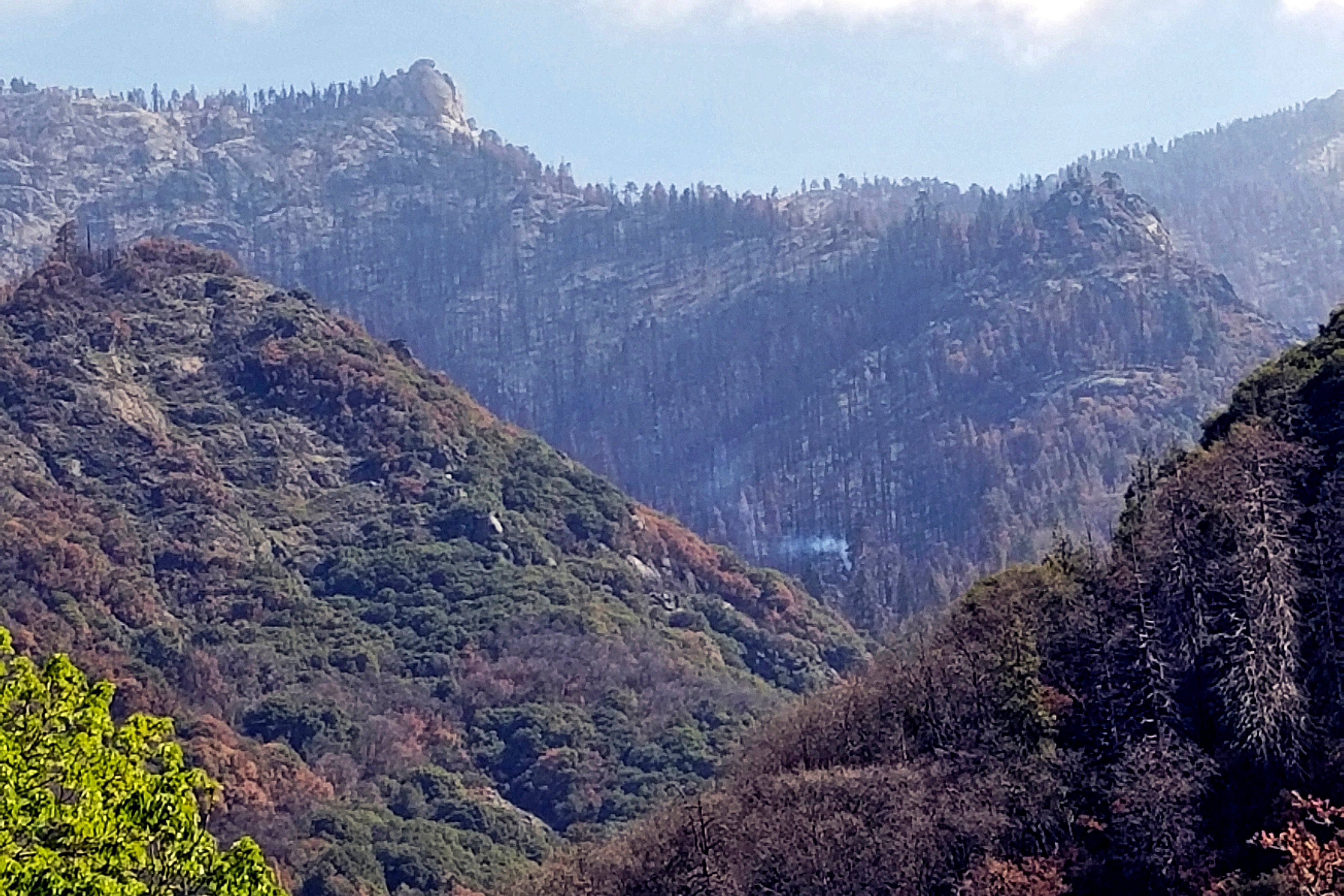California fire killed 10% of world’s redwood trees, study says
A draft study says at least a tenth of the world’s mature giant sequoias were destroyed by a single California wildfire that tore through the southern Sierra Nevada last year

Your support helps us to tell the story
From reproductive rights to climate change to Big Tech, The Independent is on the ground when the story is developing. Whether it's investigating the financials of Elon Musk's pro-Trump PAC or producing our latest documentary, 'The A Word', which shines a light on the American women fighting for reproductive rights, we know how important it is to parse out the facts from the messaging.
At such a critical moment in US history, we need reporters on the ground. Your donation allows us to keep sending journalists to speak to both sides of the story.
The Independent is trusted by Americans across the entire political spectrum. And unlike many other quality news outlets, we choose not to lock Americans out of our reporting and analysis with paywalls. We believe quality journalism should be available to everyone, paid for by those who can afford it.
Your support makes all the difference.At least a tenth of the world’s mature giant sequoias were destroyed by a single California wildfire that tore through the southern Sierra Nevada last year, according to a draft report prepared by scientists with the National Park Service
The Visalia Times-Delta newspaper obtained a copy of the report that describes catastrophic destruction from the Castle Fire, which charred 273 square miles (707 square km) of timber in Sequoia National Park
Researchers used satellite imagery and modeling from previous fires to determine that between 7,500 and 10,000 redwoods perished in the fire. That equates to 10% to 14% of the world’s mature giant sequoia population, the newspaper said.
“I cannot overemphasize how mind-blowing this is for all of us. These trees have lived for thousands of years. They’ve survived dozens of wildfires already,” said Christy Brigham, chief of resources management and science at Sequoia and Kings Canyon National Parks.
The consequences of losing large numbers of giant sequoias could be felt for decades, forest managers said. Redwood forests are among the world’s most efficient at removing and storing carbon dioxide in the atmosphere. The groves also provide critical habitat for native wildlife and help protect the watershed that supplies farms and communities on the San Joaquin Valley floor.
Brigham, the study's lead author, cautioned that the numbers are preliminary and the research paper has yet to be peer-reviewed. Beginning next week, teams of scientists will hike to the groves that experienced the most fire damage for the first time since the ashes settled.
“I have a vain hope that once we get out on the ground the situation won’t be as bad, but that’s hope — that’s not science,” she said.
The newspaper said the extent of the damage to one of the world’s most treasured trees is noteworthy because the sequoias themselves are incredibly well adapted to fire. The old-growth trees — some of which are more than 2,000 years old and 250 feet (76 meters) tall — require fire to burst their pine cones and reproduce.
“One-hundred years of fire suppression, combined with climate change-driven hotter droughts, have changed how fires burn in the southern Sierra and that change has been very bad for sequoia,” Brigham said.
Sequoia and Kings Canyon have conducted controlled burns since the 1960s, about a thousand acres a year on average. Brigham estimates that the park will need to burn around 30 times that number to get the forest back to a healthy state.
The Castle Fire erupted on Aug. 19 in the Golden Trout Wilderness amid a flurry of lightning strikes. The Shotgun Fire, a much smaller blaze burning nearby, was discovered shortly afterward, and the two were renamed the Sequoia Complex.